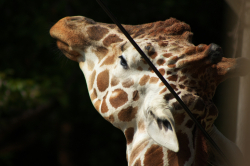NASA’s lander to probe interior of Mars. NASA has sent orbiters to study the atmosphere of Mars and rovers to study its surface. Now, the agency plans to look inside the planet. The $814 million InSight lander, due to launch next month, carries three instruments designed to peer through Mars's rusty shell, including a seismometer that will detect “marsquakes.”
New microscope captures detailed images and 3D videos on cellular and subcellular level. Astronomers developed a "guide star" adaptive optics technique to obtain the most crystal-clear and precise telescopic images of distant galaxies, stars and planets. Now a team of scientists are borrowing the very same trick. They've combined it with lattice light-sheet to create a new microscope that's able to capture real-time, incredibly detailed and accurate images, along with three-dimensional videos of biology on the cellular and sub-cellular level.
Large mammal extinction linked to ancient humans. Homo sapiens, Neanderthals and other recent human relatives may have begun hunting large mammal species, such as elephant-dwarfing wooly mammoths, elephant-sized ground sloths and various saber-toothed cats down to size, by way of extinction at least 90,000 years earlier than previously thought.
Robots put together an Ikea chair in about 20 minutes. Tthe robots first took pictures to identify each part of the chair. An algorithm planned the motions the robots needed to manipulate the objects without causing any collisions; two robotic arms then performed those actions in concert. Feedback from force sensors also helped: When the robot needed to insert a pin into a hole, for example, it would slide the pin over the surface until it felt a change in force.
People perform better in front of an audience. Often people think performing in front of others will make them mess up, but a new study led by a Johns Hopkins University neuroscientist found the opposite: being watched makes people do better. When people know they are being observed, parts of the brain associated with social awareness and reward invigorate a part of the brain that controls motor skills, improving their performance at skilled tasks. The findings, wheuich could help people become more effective in the workplace and in school.




